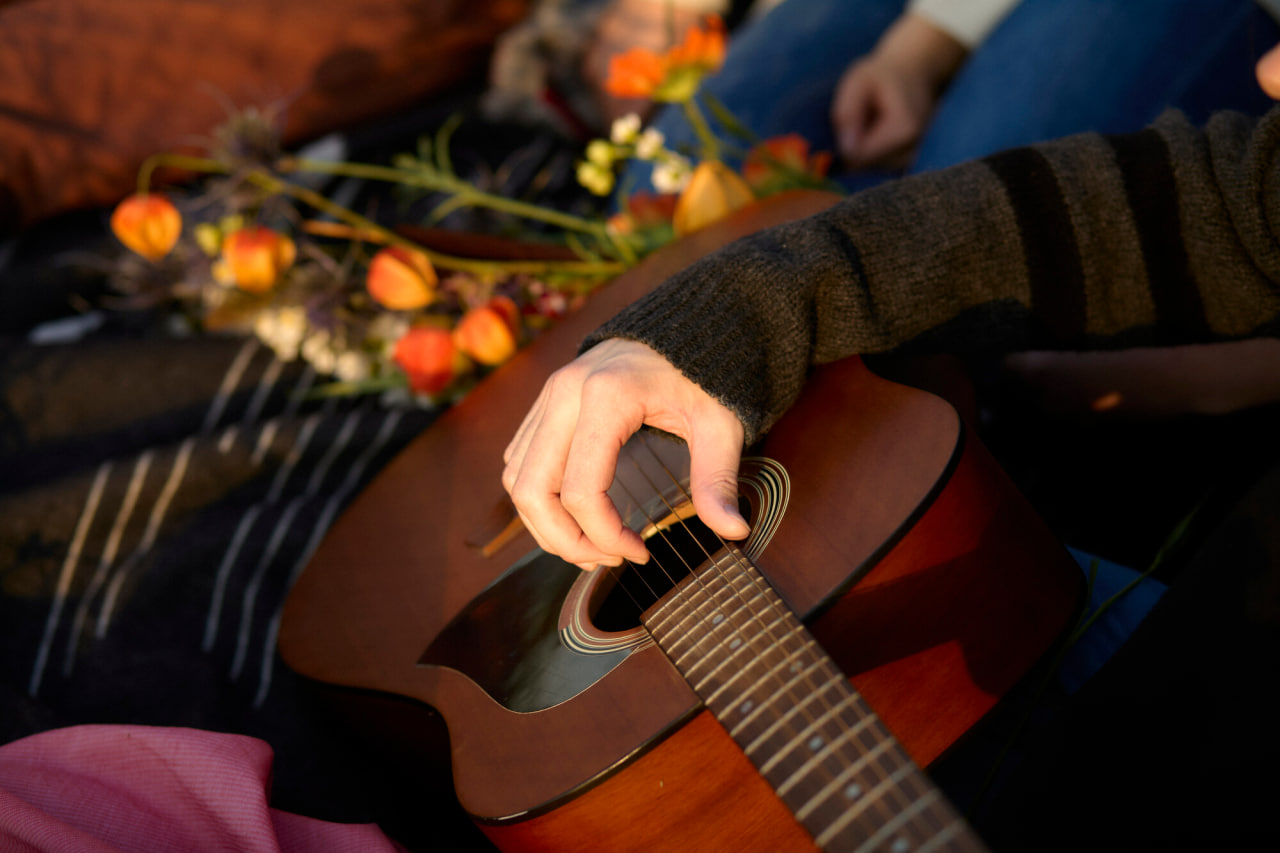From Practice to Performance: Building Confidence on the Acoustic Guitar
Learning to play acoustic guitar is a journey that goes beyond mastering chords, strumming, or fingerpicking. True confidence comes from bridging the gap between practice sessions and performing in front of others, whether for friends, family, or on stage. By understanding how to prepare, practice effectively, and manage performance nerves, beginners can develop both skill and self-assurance.
The Importance of Consistent Practice
Confidence starts with consistent practice. Regular sessions help build muscle memory, timing, and accuracy.
- Structured Practice – Focus on specific techniques such as chord transitions, strumming, or fingerpicking during each session.
- Short, Frequent Sessions – Practicing 20–30 minutes daily is more effective than longer, infrequent sessions.
- Goal Setting – Set achievable daily or weekly goals to track progress and maintain motivation.
Consistent practice reinforces skills and reduces anxiety when performing.
Overcoming Stage Fright
Even skilled guitarists can feel nervous before performing. Stage fright is common but manageable:
- Preparation Reduces Anxiety – Know your songs inside and out to boost confidence.
- Visualize Success – Imagine performing smoothly and receiving positive feedback.
- Start Small – Perform for friends or family before tackling larger audiences.
- Focus on Music, Not Mistakes – Concentrate on expression and enjoyment rather than perfection.
Facing nerves gradually allows performers to build confidence over time.
Rehearsing for Performance
Effective rehearsal strategies ensure readiness:
- Simulate Performance Conditions – Play as if in front of an audience to practice timing and presence.
- Record Yourself – Listening back helps identify areas for improvement and boosts self-awareness.
- Practice Setlists – Run through multiple songs consecutively to replicate live performance demands.
- Dynamic Control – Pay attention to volume, accents, and expression for a polished sound.
Rehearsing thoughtfully prepares beginners for real-world performance situations.
Building Confidence Through Small Wins
Confidence grows with each successful step:
- Master Individual Songs – Start with one or two pieces you can play comfortably.
- Celebrate Progress – Acknowledge improvements in technique and musicality.
- Play with Others – Jamming with friends or fellow students builds ensemble skills and reduces performance anxiety.
Small achievements accumulate, reinforcing self-assurance and readiness for larger challenges.
Expressive Playing
Confidence is also expressed through musicality, not just technical skill:
- Emphasize Dynamics – Vary volume and strumming intensity to convey emotion.
- Use Tempo Creatively – Slight changes in speed can enhance phrasing and expression.
- Engage with the Audience – Eye contact and body language make performances more compelling.
Expressive playing demonstrates confidence and musical understanding.
The Role of Feedback
Constructive feedback accelerates growth and builds assurance:
- Seek Input from Teachers or Peers – Identify strengths and areas needing improvement.
- Self-Evaluation – Reflect on recordings to notice progress and patterns.
- Incorporate Adjustments Gradually – Apply feedback in manageable steps to avoid frustration.
Using feedback effectively enhances skills and strengthens confidence.
Performing in Public
When ready, performing publicly becomes a rewarding experience:
- Start Small – Open mic nights, family gatherings, or online video recordings are good starting points.
- Embrace Mistakes – Minor errors are natural; maintain focus on musical expression.
- Enjoy the Experience – Performance is an opportunity to share music and express creativity.
Each performance reinforces skills, reduces anxiety, and builds long-term confidence.

